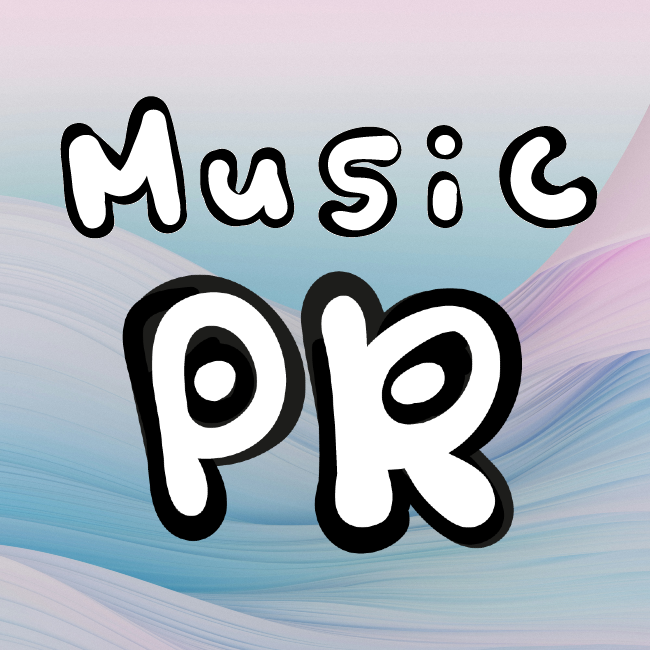Faith Gregory • September 29, 2025
The Analog Comeback: Vinyl and CDs May Be Indie Music's Secret Weapon
- PR ON THE GO Expert Panel

Author: Faith Gregory
Faith is a Communications major at Loyola Marymount University with a deep passion for music and public relations. Her love for music began in high school when she began playing bass guitar, which has evolved into a lifelong career path. With PR ON THE GO, she aims to build media relations and discover the modern day road to success in the music industry.
Despite the dominance of streaming platforms in the music industry, physical media has seen a resurgence in recent years. While streaming services place every song at our fingertips, younger generations have discovered that vinyl and CDs offer a distinctive listening experience. Not only do these provide an enhanced auditory experience, but also a physical one. The process of removing vinyl from its sleeve, placing it onto a turntable, and gently setting down the needle offers a direct connection to the music. CDs provide a similar experience at a lower price point. Many social media users have agreed that a more meaningful approach to music listening is worth the small sacrifice of convenience. Additionally, the nostalgic and aesthetic appeal of physical media have become particularly significant to Gen Z and Millennial listeners.
Why does this matter to up and coming musicians? Physical media may be a valuable form of merchandise at indie shows.
I asked our PR & growth experts: How can indie musicians utilize the rising trend of physical media to grow their fanbase? How do aesthetics and nostalgia impact the local music scene and the purchasing decisions of fans? Does selling physical media provide any unique benefits for beginner musicians?
Here are the experts' insights.
- Discovery by new audiences
- Actually owning music offers emotionally charged content
- Aesthetics and nostalgia play a role.
- Turn a product into an experience
- Loyalty develops when the audience can hold onto the product
- It prompts listeners to create experiences and memories
@javieraarmas this took too long #bjork #sophie #charlixcx #rosalia #vinyl #records #collection ♬ Big Time Sensuality - Bjork
Discovery by new audiences
Emily Reynolds-Bergh, Owner at R Public Relations
"In addition to differentiating themselves from the typical t-shirt, hat, and poster merchandise options, new artists can use physical media to improve brand awareness and discovery by new audiences. Selling vinyls and CDs means new listeners may discover artists by accident at a friend’s house or in a listening room. Physical media can also make for an interesting media mailer. Sending a vinyl or CD to reporters is sure to help new musicians stand out from everyone else sending traditional emails and making phone calls."
Actually owning music offers emotionally charged content
Joel Lim, Finance Expert at Becoin.Net
"It strikes me that vinyl and CDs can be a great tool for indie musicians to distinguish their presence against digital-only releases.
That tangible act of actually owning music offers much more emotionally charged content than the playlist that drifts away into some foggy algorithmic feed.
For an up and coming artist, it may be better to have physical merch at the show, for then the casual attendee may be converted into a supporter invested in the actual journey.
Cover art and packaging really do matter, especially now that younger audiences see music as a lifestyle statement.
Gen Z and Millennials link nostalgia with genuity, and purchasing vinyl or CDs is their way to express their next-level identity.
Such media also provide a potential avenue for collecting and incentivize further engagement, most notably when artists enter into limited edition or signed copy collaborations.
Merch tables offer a tangible revenue stream early on, incidentally yielding income rather than the slow route via streaming royalties.
Most of all, such formats become conversation starters for the physical case that fans will continue flashing around and exchanging afterward."
Aesthetics and nostalgia play a role.
Yad Senapathy, Founder & CEO at Project Management Training Institute (PMTI)
"Independent artists who enter the physical media are not only allowed to sell music. A vinyl album or a limited edition CD becomes a keepsake. Fans are no longer just paying for music but for a part of the artist's journey. That is a completely different exchange than hitting a play button on a streaming service. When a listener spends $25 on an album at a local record store or $10 for a CD, they take the music and a memory home with them. Staring at that cover, with the uniqueness of its artwork, makes it more attached to that musician.
Aesthetics and nostalgia play a role. in these purchases. This can be linked directly to an earlier ritual of music listening, which is why Gen Z fans like to collect older music formats. The experience of seeing the handwritten lyrics or a beautiful cover design crafted by the indie band turns the purchase into a personal event. Fans like that sort of information, because it's personal.
An equivalent boon is that instead of relying on streaming, beginners have an advantage when they sell physical media. Margins are dead obvious and instantaneous. In other words, a CD that is retailing for $15 at a show could generate the same revenue as thousands of streams. With an innovative format that rewards long-term fans who cherish a collectible rather than a transient digital play, and a cash flow that makes it possible to tour, record and promote, the single could be a viable option for the indie of tomorrow."
@eimmelistenstomusic guess what i have in my collection ;) #cds #cdtour #cdhaul #haul #thrift #thrifted #hauls #cdcollection #cdcollector #pop #rap #jeffbuckley #arianagrande #radiohead ♬ Talk of the Town - The Love Rights
Turn a product into an experience
Ameer Draidy, PR Expert at Circular Design
"After five years in the field, I can tell this isn't about nostalgia; it's about connection. In a world of endless, disposable digital streams, a physical record is a stake in the ground. It says, "This artist matters to me."
For an indie musician, leveraging this trend is about turning a product into an experience. Don't just sell a CD. Sell a limited, hand-numbered run of CDs with unique cover art. I’ve seen people writing about adding a little handwritten note inside each vinyl sleeve on Reddit’s music forums. That makes a $25 purchase into something that feels like it’s _yours. The fan today is no longer a customer; they’re an insider. It’s how you build a loyal following, one fan at a time. You give them a tale to tell.
Aesthetics and nostalgia are the hook. On TikTok and Instagram, a vinyl record isn't just for listening; it's a piece of decor, a visual signal of one's taste. A striking album cover on a merch table can make a sale before the fan has even heard the full record. It's a promise of the world the music inhabits. For the local scene, it creates a physical culture. Fans trade records, talk about the artwork, and share photos of their collection. It makes the music tangible and shareable beyond a playlist link.
For a new musician, the benefits are incredibly direct. The most obvious is financial survival. Selling 20 records at a show can fund your gas to the next gig; you'd need tens of thousands of streams to see that same amount of money.
But the real, unique benefit is data and relationships. Spotify gives you anonymous listeners. A fan buying a vinyl at your merch table gives you a face, a conversation, and a chance to get them on your email list. It’s the difference between a handshake and a 'like.' For a beginner, that direct connection is everything. It’s what you make a listener into a lifelong supporter who will be there not only for your next show, but also for the one after that."

Find our DIY growthhacking tips for indie musicians, DJs, festival organizers, music tech, music producers, and venues here.
Growthhacking MusicLoyalty develops when the audience can hold onto the product
Jin Grey, CEO & SEO Expert at jingrey.com
"Physical media makes music real & collectible. My experience is that loyalty develops when the audience can hold onto the product. A campaign I steered in the affiliate vertical increased repeat sales by 35%, following the introduction of physical items. Musicians can replicate this by placing some small vinyl runs. 200 records at $30, generate $6,000 while simultaneously converting listeners into collectors. The change not only provides immediate income but creates a connection that is deeper than streaming.
Fans are impacted by the design choices and nostalgic experience. I’ve watched beauty customers talk about their packaging story before mentioning the actual product and social posts. I’ve seen limited art covers and hand-written notes spread quickly on social media and local circles. I’ve seen 40 even sales turn into engagements, ticket sales, and crowdfunding potential. For physical media, the nostalgia value assures fans an element of ownership that says their bond isn’t temporary beyond a stream."
It prompts listeners to create experiences and memories
Mimi Nguyen, Founder at Cafely
"With the rising trend of physical media, I believe focusing on establishing an emotional connection beyond their music is a good strategy for indie musicians to grow their fanbase. It might be a good idea to commission indie visual artists or graphic designers to create a variety of personalized merchandise to achieve this. Simply designing t-shirts or keychains with either their album cover art or song lyrics can be considered fan mementos that can add to the nostalgia of being their fan too.
I personally feel that the simple act of buying a vinyl or CD and playing it on a turntable or CD player completes the entire fan experience. I believe it also prompts listeners to look back on the first time a song of their favorite musician resonated with them. Even better if the artist is directly involved with planning the concept and aesthetics for their physical media.
Selling physical media not only helps promote beginner musicians but also gives their audience and soon-to-be fans a tangible piece of their music. Even if they stop playing music or move to a different genre, their physical media has already given them a foundation to their fanbase."
#PRontheGO
Subscribe to the PR ON THE GO newsletter.
Receive the latest media news in your inbox. Discover journalists and start pitching!